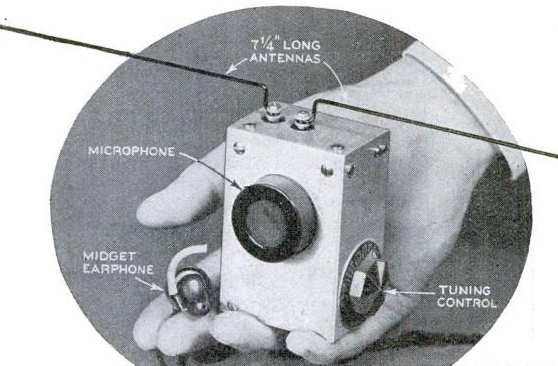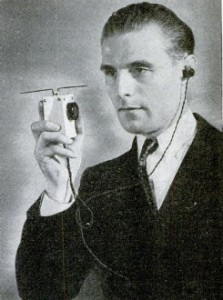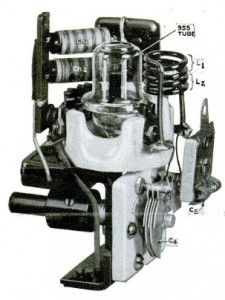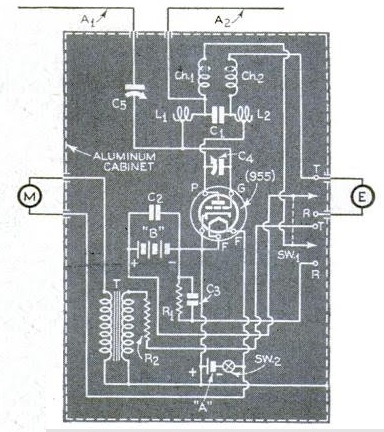
 Eighty years ago this month, the March 1938 issue of Popular Science carried the plans for this transceiver, which it billed as the world’s smallest two-way radio. Weighing less than ten ounces, the set could be carried in a coat pocket. The set shown here was for the 3/4 meter band, but could also be built for the 1-1/2 meter band. The heart of the circuit was a 955 acorn tube.
Eighty years ago this month, the March 1938 issue of Popular Science carried the plans for this transceiver, which it billed as the world’s smallest two-way radio. Weighing less than ten ounces, the set could be carried in a coat pocket. The set shown here was for the 3/4 meter band, but could also be built for the 1-1/2 meter band. The heart of the circuit was a 955 acorn tube.
A DPDT switch was used to switch  from transmit to receive. In the transmit position, the circuit was an efficient oscillator, and in receive, a grid leak and condenser were added to the circuit to produce a sensitive receiver.
from transmit to receive. In the transmit position, the circuit was an efficient oscillator, and in receive, a grid leak and condenser were added to the circuit to produce a sensitive receiver.
The external batteries were acually larger than the radio. Two 3-volt flashlight batteries were used for the filaments, with a 45 volt battery providing the B+.
In order to make sure the radio was operating within the amateur band, the article described a simple wave meter, consisting of a flat U-shaped loop of No. 12 wire hooked to a galvanometer. The transmitter was held close to the loop and moved along until the highest current rating was shown. The transmitter wavelength was equal to the distance along the wire to the meter.
The construction article reminded readers that an amateur license was necessary to use the transmitter. But for those considering trying for the license in the near future, the construction of the set would teach many of the radio fundamentals that would be on the test.
The circuit here is similar to this WERS transceiver shown here previously. In case you’re wondering, the 955 tubes do seem to be readily available on eBay.

